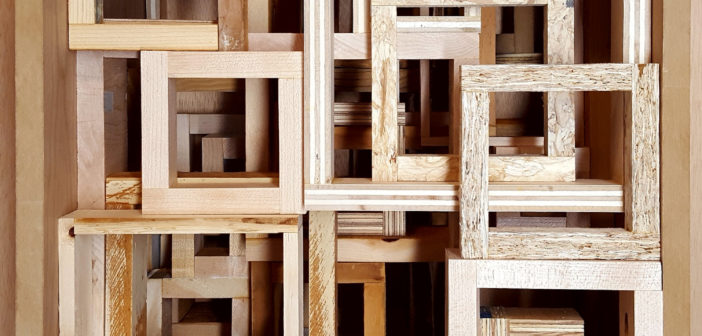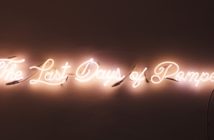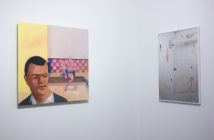Doug Weathersby turns the act of cleaning and organizing into his art. For $60 an hour, Environmental Service will perform any task that the customer may need, from house painting and studio cleanup to art installation. He takes the fragments and detritus from each job and records them for his daily logs, a project that documents materials, grocery lists, and the billable hours he worked. He has done this daily since 2009, and by taking objects and photographs he inserts himself and makes these chores into a body of work. A Year in Review, which recently closed at VERY, payed homage to time and change shown through piles of dust and bits of 2 x 4 pine.
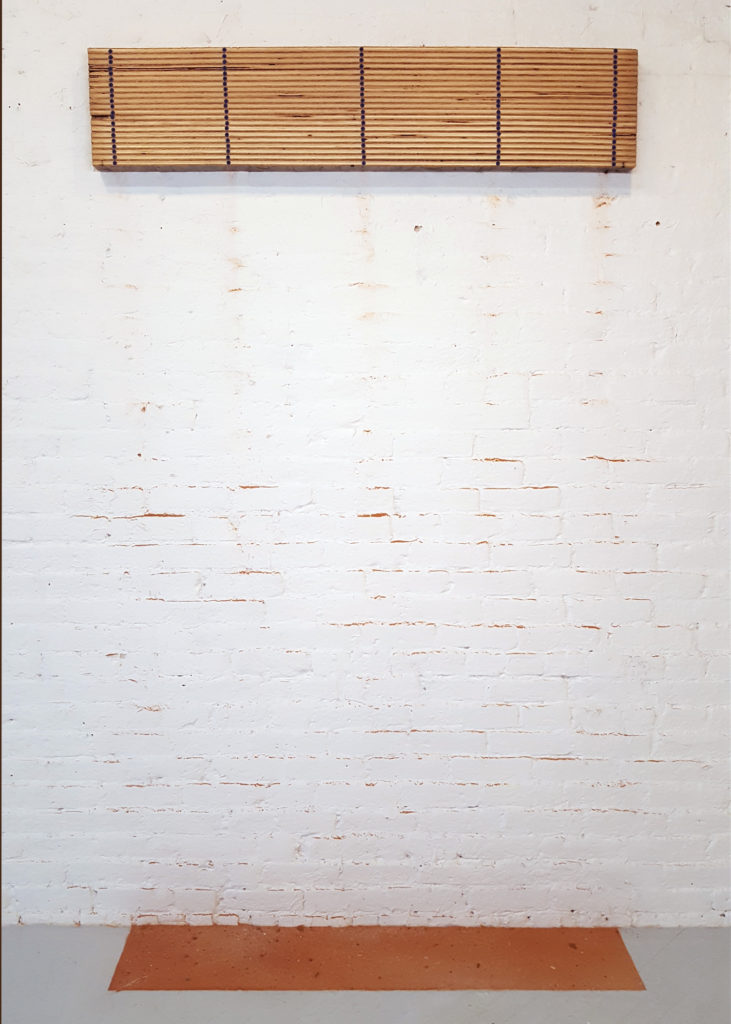
Courtesy of Doug Weathersby.
A sculpture of collected wood and a Plexiglass case holds a year’s worth of dust. Placed in the center of the gallery alongside living room sofas, Weathersby has elevated this detritus. It suggests the bottom of an hourglass, time in the form of dust trickled down to form a mound, making these particles, once small on the floor, into an important single unit of matter. On the wall facing the entrance displays process in action. Two rectangles formed from strips of old plywood sheets are screwed into the wall. These rectangles are mirrored on the floor beneath where the brick dust fell during the installation. The wood itself comes from the gallery’s previous occupant. (In another life, VERY was an artist's studio.)The act of reinstalling the discarded scraps of a past studio as a new work has a poetic resonance reflected in the dusty shapes below.
The passage of time, poetry, and history make up the themes of the show. Time is suggested via the daily logs; they clock every day’s activity and labor, breaking down a year into a manageable structure, each turn of the page is a new day, a record of time passed. These glossy table books are displayed nonchalantly in the VERY space. the pages are dotted with phrases and to do lists that read like short form haiku. For example, one includes:
“Things to do today / Load Van / Good bye / Drive.” and “Got Plants / Finished up./ Saw Mom. .
These seemingly small sentiments continue into each compartment of a honeycombed structure climbing around one gallery wall. Here, each paint chip and stripped screw is purposeful. The boxes are composed from the scrap wood of a year of jobs, cut into quarters and then assembled into boxes. One such box contains a bundle of old electrical cords and two spaces away a hand drill sits in its own little trophy case. The boxes mirror and rhyme with each other, creating a visual measure and tempo.
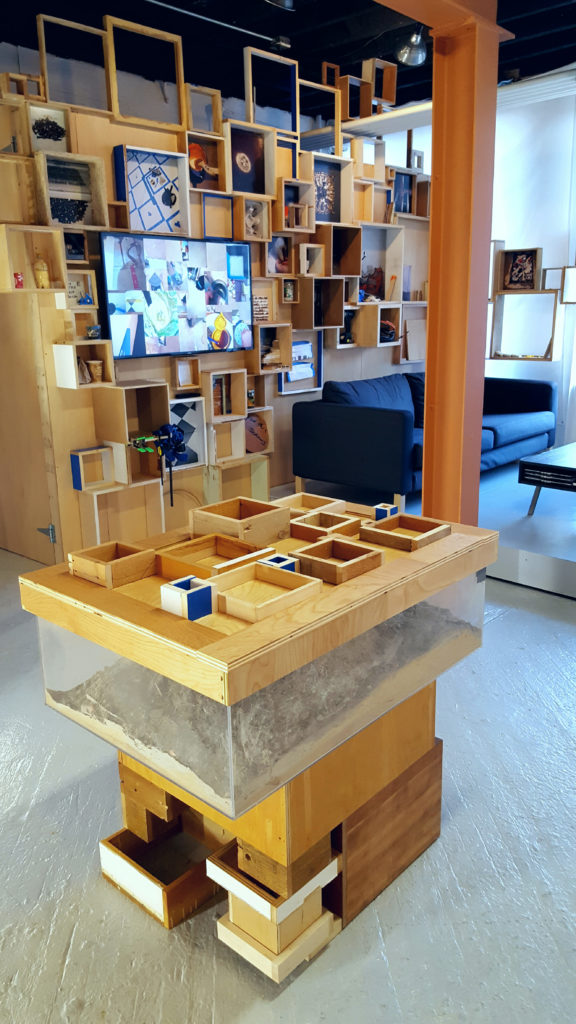
Courtesy of Doug Weathersby.
Weathersby is an archaeologist of sorts, and he displays his chosen artifacts in shadow boxes or on pedestals. In the process of cleaning he discovers a collective human history and reconstructs his civilization and dig sites in dust and wood chips. The artifacts Weathersby unearths are an intimate personal account of a person, place, and space. Presented as sculptural objects, they offer a glimpse into a rich history outside of us that is cultivated over time. What the artist deems worthy of categorization may not be what we ourselves consider important--the very nature of the subject matter being other’s scraps--but nonetheless they become larger than life in his care.
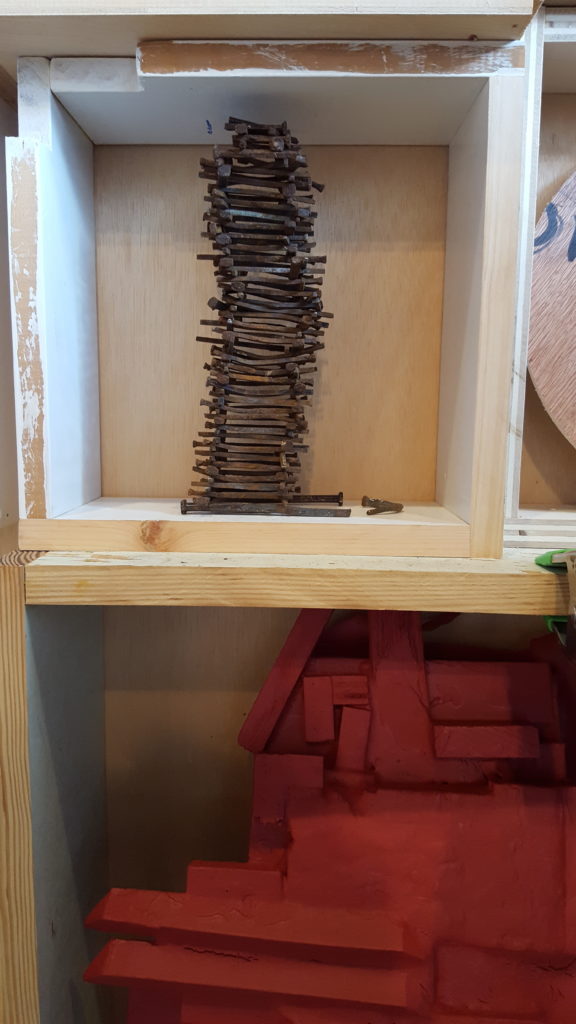
Courtesy of Doug Weathersby.
We are left to wonder about the dig sites of personal history that may have been vacuumed up or sorted away into drawers and bins. What fragments of narrative have been donated to Goodwill, for example? If, as Fairfield Porter once said, “Love is paying attention,” then Weathersby exemplifies tenderness. As Weathersby writes in one of the logbooks on view at VERY, “Nothing New.” There is not a scrap of so called “New” material in this show, and yet it feels fresh and invites the viewer to pay close attention to this new matter born out of the fragments of a year passed.

